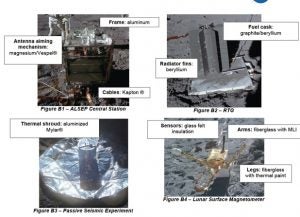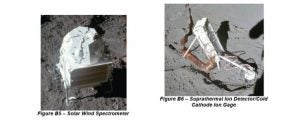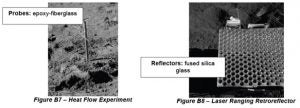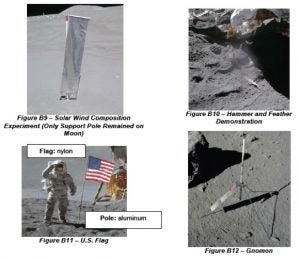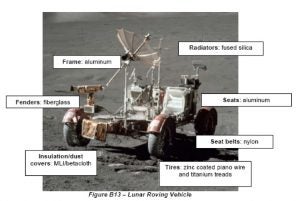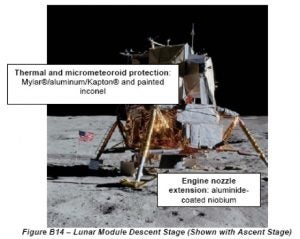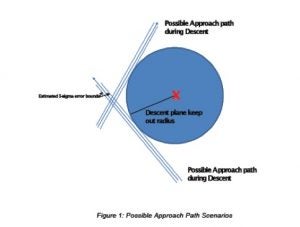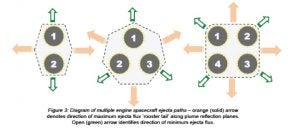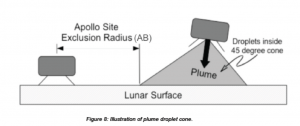Several years ago, our team member Metzger contacted by Astrobotics to provide guidelines for visiting the Apollo landing sites to avoid damaging them. Metzger advocated with NASA headquarters to develop guidelines, and a team was put together led by Rob Kelso of NASA/JSC. Metzger wrote the sections of the guidelines related to plume effects protection. Because we have an inadequate understanding of the plume effects, and because the modeling is still very immature, it was not possible to create very reliable guidelines. The team took the approach that this would be a “living document” that is revised as our understanding of the physics improves. We are currently working toward an update of the document.
The following is a summary of the artifacts on the Moon and the guidelines to protect them.
Types of U.S. Artifacts on the Moon
- Apollo lunar surface landing and roving hardware
- Unmanned lunar surface landing sites
- Impact sites (e.g., Ranger, S-IVB, LCROSS, LM ascent stage)
- Experiments left on the lunar surface, tools, equipment, misc. EVA hardware
- Specific indicators of US human, human-robotic lunar presence, including footprints, rover tracks, rocks fractured to take samples, etc.
- NOTE: not all anthropogenic indicators are protected as identified in the recommendations
Some Representative Artifacts
The following are copied from the NASA document.
Some of the Main Guidelines
Landing
- Land 2 km away from the artifacts on a tangential approach.
- The purpose of the tangential approach is in case the descent engines fail, the spacecraft is guaranteed to crash at least 2 km away, removing the possibility of crashing directly on the artifacts.
-
Keep plume reflection planes pointed away from the artifacts, since enhance erosion rates and higher ejecta angles occur on those planes.
-
Land behind natural terrain barriers to block the spray as much as possible
-
2 km distance reduces but does not eliminate damage
-
Damage is cumulative with each visiting spacecraft
-
Terrain barriers are for ALARA principle, “As Low As Reasonably Achievable”
-
Low Altitude Flyby
- Hoppers translating within 2 km should remain higher than 40 m
- Ensure no dust motion
- Hoppers never get within a 45 degree cone of artifact boundary
- Ensure no propellant droplets deposited on artifacts
Avoid Damaging Spacecraft That Are In Orbit
- Collision Avoidance (COLA) windows should be assessed to protect orbiting spacecraft
- Ejecta travels higher than orbital altitudes
- Impact velocities will be relative to spacecraft motion, putting it into the hypervelocity impact regime
- Can expect multiple impacts if spacecraft is at trajectory node same time as ejecta
Some of the Additional Guidelines (in Addition to Plume Effects)
- Rover keep out zones, varying for each site
- Linear wheel speed of rovers
- Use direct approach and backtrack to avoid excessive disturbance of soil
